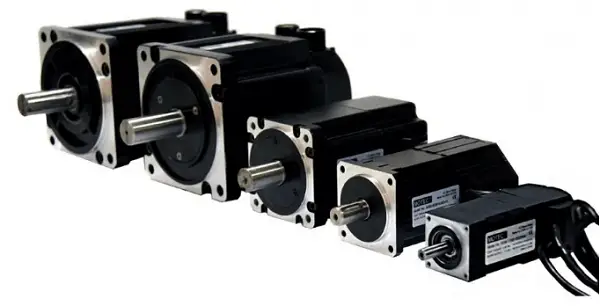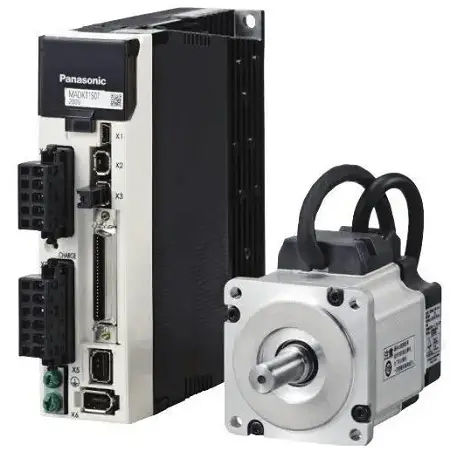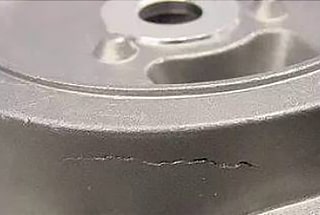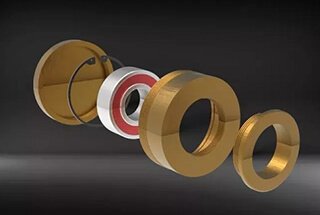Under what conditions will the servo motor shake? How can the problems caused by servo motor jitter be solved? What are the solutions?
For example, if the acceleration and deceleration time is set too small, the servo motor will produce high inertia jitter when it suddenly starts or stops.
Increasing the acceleration and deceleration time can solve this problem.
The following is an analysis of the causes of servo motor jitter by netizens, for your reference.
Viewpoint 1
When the servo motor shakes at zero speed, the gain should be set low to reduce the gain value.
If the alarm stops when the motor starts, the most likely reason is that the motor phase sequence is incorrect.
Viewpoint 2
The following are some reasons why servo motors may experience jitter and suggestions on how to solve the problems:
- If the servo motor jitters at zero speed, try to reduce the gain value by setting the gain high.
- If the motor phase sequence is not correct, it may cause the alarm to stop when the motor starts.
- Setting the PID gain too high, especially after adding D, may cause motor jitter. In this case, try to increase P and reduce I, and avoid adding D.
- Jitter may also occur if the encoder is connected incorrectly.
- If the load inertia is too large, consider replacing the motor and driver with a larger one.
- Analog input port disturbance can cause jitter, and adding a magnetic ring to the motor input line and the servo driver power input line can help keep the signal line away from the power line.
- Poor grounding of the rotary encoder interface motor can also cause vibration.

Viewpoint 3
① Servo wiring:
- Use standard power cable, encoder cable, control cable and check whether the cable is damaged;
- Check whether there is interference source near the control line, whether it is parallel to or too close to the nearby high current power cable;
- Check whether there is any change in the potential of the grounding terminal to ensure good grounding.
② Servo parameters:
- The servo gain setting is too large, so it is recommended to adjust the servo parameters manually or automatically;
- Confirm the setting of the time constant of the speed feedback filter. The initial value is 0. Try to increase the setting value;
- The setting of electronic gear ratio is too large, so it is recommended to return to the factory setting;
- Try to adjust the frequency and amplitude of harmonic filter.
③ Mechanical system:
- The coupling connecting the motor shaft and the equipment system is offset, and the mounting screw is not tightened;
- Poor engagement of pulley or gear will also lead to load torque variation. Try to run without load. If it is normal during no-load operation, check whether the joint part of mechanical system is abnormal;
- Confirm whether the load inertia, torque and speed are too large, and try to run without load. If the no-load operation is normal, reduce the load or replace the driver and motor with larger capacity.

Viewpoint 4
Servo motor jitter is caused by mechanical structure, speed loop, compensation board and servo amplifier of servo system, load inertia, electrical part etc.
Summary
1. The vibration caused by mechanical structure can be divided into two cases
1) No load jitter:
- The motor foundation is not firm, the rigidity is not enough or the fixation is not tight.
- The fan blade is damaged, which destroys the mechanical balance of the rotor.
- The shaft is bent or cracked. It can be solved by fastening screw, replacing fan blade and shaft.
2) If the vibration occurs after loading, it is generally caused by the failure of the transmission device.
It can be judged that there are defects in the following parts:
- The rotation of belt pulley or coupling is unbalanced.
- The central line of the coupling is inconsistent, so that the motor and the mechanical axis are not coincident.
- The transmission belt joint is unbalanced. It can be solved by adjusting the transmission device to make it balance.
2. Jitter caused by speed loop problem
The integral gain, proportional gain, and acceleration feedback gain of the velocity loop may be improper.
The greater the gain, the greater the velocity, the greater the inertia force, and the smaller the deviation, making jitter more likely to occur.
Setting a small gain can maintain the speed response and is less likely to cause jitter.
3. Jitter caused by fault of compensation board and servo amplifier of servo system
When the motor suddenly stops during motion, it can cause significant jitter. This is often due to improper BRK terminal connection or parameter settings in the servo amplifier.
To reduce the jitter, the time constant of acceleration and deceleration can be increased. Alternatively, the motor can be started or stopped more slowly using the PLC.
4. Jitter caused by load inertia
The problem with the guide rail and screw can cause an increase in load inertia.
The moment of inertia of the guide rail and lead screw has a great influence on the rigidity of the servo motor drive system.
Under fixed gain, a larger moment of inertia leads to greater rigidity and an increased likelihood of motor jitter.
On the other hand, a smaller moment of inertia leads to reduced rigidity and a lower likelihood of motor jitter.
To reduce the load inertia and prevent motor jitter, one solution is to change the guide rail and screw to a smaller diameter, which will reduce the moment of inertia.
5. Jitter caused by electrical part
The brake is not disengaged, causing the feedback voltage to become unstable.
Check if the brake is engaged and try using the encoder vector control to output a certain torque by reducing the torque to solve the jitter.
If the feedback voltage is abnormal, check if the vibration period is related to the speed.
If it is, check if the connection between the spindle and the spindle motor is faulty or if the spindle and the pulse generator installed at the tail of the AC spindle motor are damaged.
If it is not related to speed, check for any faults on the printed circuit board and either check or readjust the circuit board.
Sudden motor jitter during operation is mostly caused by a lack of phase. Check if the fuse has melted, if the switch contacts are good, and if each phase of the power grid has power.
Final thoughts
After reading the analysis provided by these netizens, do you have a general understanding of what can cause servo motor jitter?
If you encounter this issue, you can investigate the potential causes suggested by the netizens.
Additionally, it’s important to be aware of these problems and take measures to avoid servo motor vibration.


